私服是架设在局域网的一种特殊的远程仓库,目的是代理远程仓库及部署第三方构件。有了私服之后,当 Maven 需要下载构件时,直接请求私服,私服上存在则下载到本地仓库;否则,私服请求外部的远程仓库,将构件下载到私服,再提供给本地仓库下载。
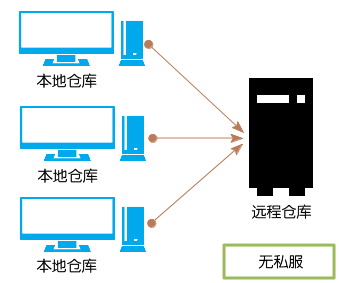
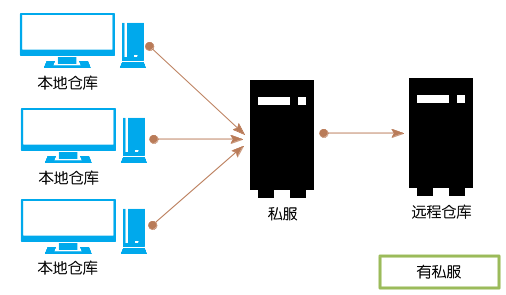
我们可以使用专门的 Maven 仓库管理软件来搭建私服,比如:Apache Archiva,Artifactory,Sonatype Nexus。这里我们使用 Sonatype Nexus。
下载Nexus
Nexus 专业版是需要付费的,这里我们下载开源版 Nexus OSS。下载地址:http://www.sonatype.org/nexus/go。
下载完成后,解压,解压后会看到两个文件

进入/nexus-3.14.0-04/bin,启动.exe文件,如果发生闪退,那是因为打开方式不对。
在nexus-3.14.0-04/etc下有个nexus-default.properties文件,打开里面修改其中application-port=8081为其他端口,8081这个端口比较抢手吧,经常被占用,这里我就修改为8083了。
这个时候就可以来打开nexus.exe了。
正确的打开方式:在cmd中切换到nexus.exe所在目录,然后敲入nexus.exe /run即可
之后等待一下看到
Started Sonatype Nexus OSS 3.2.1-01
表示启动成功了。
在浏览器输入localhost:8083即可看到此页面:
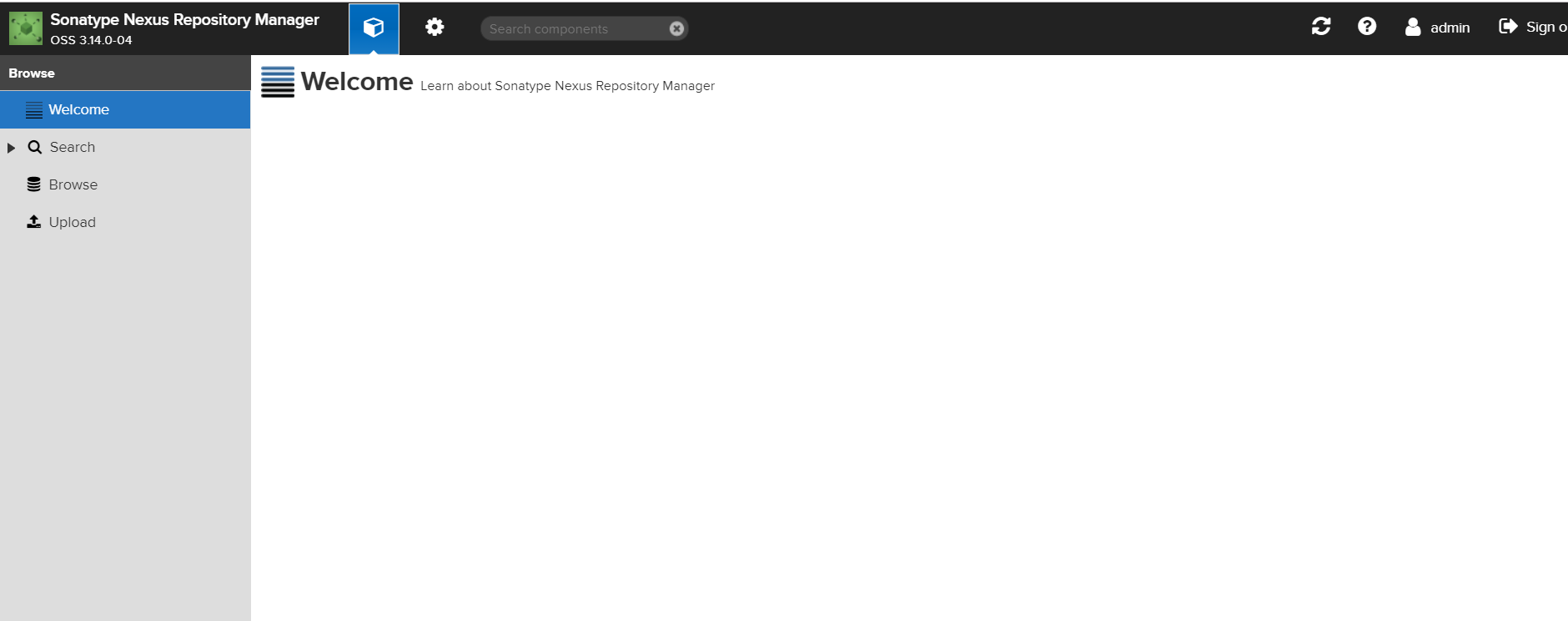
默认的账号admin,密码admin123.
component的介绍
component name的一些说明:
- maven-central:maven中央库,默认从https://repo1.maven.org/maven2/拉取jar
- maven-releases:私库发行版jar
- maven-snapshots:私库快照(调试版本)jar
- maven-public:仓库分组,把上面三个仓库组合在一起对外提供服务,在本地maven基础配置settings.xml中使用。
component type的一些说明:
- hosted:类型的仓库,内部项目的发布仓库
- releases:内部的模块中release模块的发布仓库
- snapshots:发布内部的SNAPSHOT模块的仓库
- 3rd party:第三方依赖的仓库,这个数据通常是由内部人员自行下载之后发布上去
- proxy:类型的仓库,从远程中央仓库中寻找数据的仓库
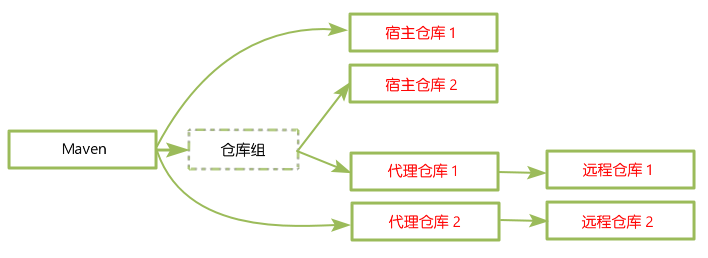
NPM私服创建
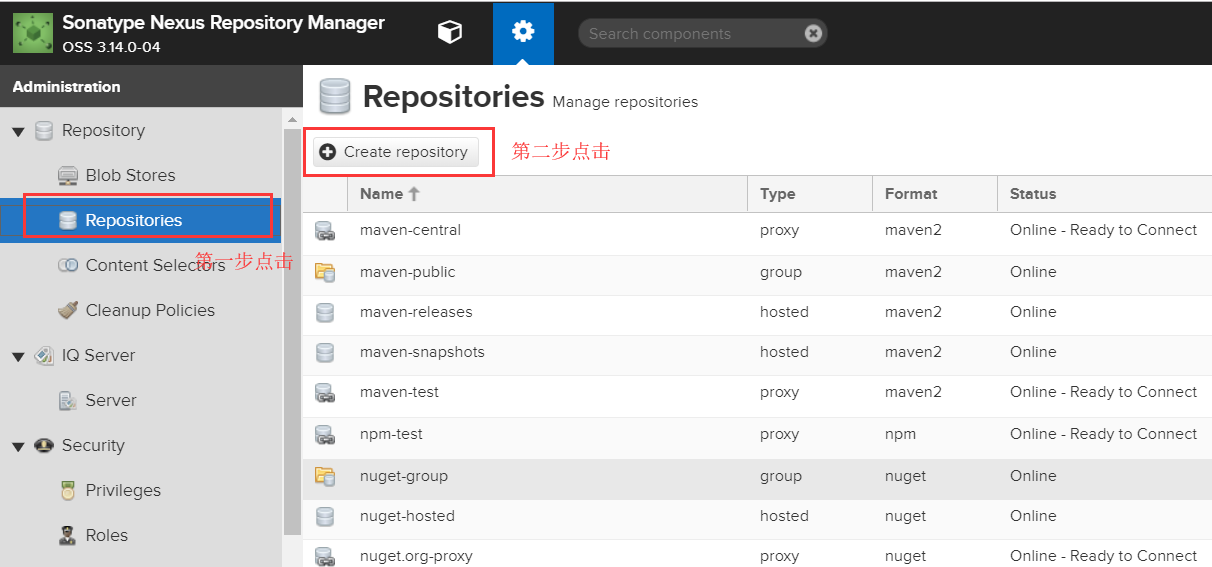

如图,如果是要创建maven就选择maven, 如果需要创建npm就选择npm, 这里选择npm proxy为例

输入好name和代理仓库的地址,如果代理仓库需要验证则在HTTP那里输入验证信息,否则不需要,这里以淘宝镜像为例:https://registry.npm.taobao.org
点击create repository
之后回到列表页面,点击copy,将仓库地址复制下来待使用
NPM私服使用
在本机打开cmd, 输入: npm config set registry url(你刚刚复制的地址) 回车之后再输入npm config ls 查看你的仓库地址有没有变
输入: npm install dva 测试你的私服是否创建成功
Maven私服使用
创建方法和NPM一样
让maven项目使用nexus作为远程仓库有两种方式,第一种是在项目的pom.xml中进行更改,让单个项目使用nexus仓库;另一种是通过修改maven的配置文件settings.xml进行更改,让所有项目都使用nexus仓库。
进入maven安装目录的conf文件夹打开,修改settings.xml文件。
(1) 服务器配置
1 | <server> |
id:这是Server的ID(不是登录进来的user),与Maven想要连接上的repository/mirror中的id元素相匹配。
username,password:这两个元素成对出现,表示连接这个server需要验证username和password。在nexus中,默认管理员用户名为admin,密码为admin123。
这里使用两个服务器配置,分别对应release和snapshot。
(2) 镜像
id,name:唯一的镜像标识和用户友好的镜像名称。id被用来区分mirror元素,并且当连接时候被用来获得相应的证书。
mirrorOf:镜像所包含的仓库的Id。例如,指向Maven central仓库的镜像(http://repo1.maven.org/maven2/),设置这个元素为central。更多的高级映射例如repo1,repo2 或者,!inhouse都是可以的。没必要一定和mirror的id相匹配。在这里mirrorOf项当然应该使用,以表明是所有仓库都会被镜像到指定的地址。
url:镜像基本的URL,构建系统将使用这个URL来连接仓库。这里应该添nexus仓库的地址,地址可以在nexus仓库页面中找到。
1 | <mirrors> |
(3)配置
1 | <profiles> |
profile项代表maven的基本配置。按照maven的一贯尿性,很多xml的配置项都会有一个配置项的复数形式作为父节点,以保证该配置项可以配置多个。在profiles项中,当然也可以配置多个profile,不过在这里配一个就够了。下面介绍profile项的各个子节点。
id:用来确定该profile的唯一标识。
repositories/repository:用以规定依赖包仓库的相关信息。在下属节点中,id就不用多说了;URL是指仓库地址,这里使用伪造的地址,否则即使设置了mirror,maven也有可能会直接从中央仓库下载包;releases和snapshots放在一块说吧,这两个节点下属的enable节点用以规定对应的依赖包是否对当前策略有效,假如将snapshot的enable项设为disable,则不会下载snapshot包,这两个节点还有updatePolicy,checksumPolicy和layout属性,这里就不多介绍了,有兴趣的查查文档吧。
pluginRepositories/pluginRepository:用以规定插件仓库的相关信息。其下属节点与repository的相同,不多说了。
(4) 当前启用配置
1 | <activeProfiles> |
用以规定当前启用的配置,将对应profile的ID加入到这一项即可使profile生效。